Features, types and methods of facing facades with natural stone
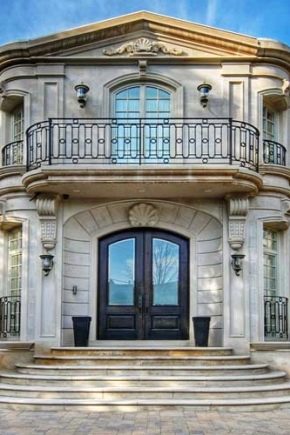
Any owner wants the appearance of the building to be aesthetic and attractive. Many people often evaluate the appearance of a house first. In order for the house to have a decent look and to attract the eyes of others, it is necessary to use natural stone in the decoration of the facade of the building. The stone façade is practical and aesthetically pleasing, and gives the house an incredible flavor.
Natural stone is quite popular, as this material is environmentally friendly and completely safe for human health and the environment. It has many advantages over other cladding materials. For example, a stone can serve for many years without losing its attractiveness and resistance to various environmental influences.


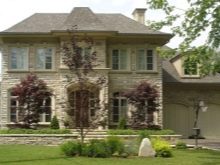
Features and types
Natural stone has a high cost, as it is practical and able to last for a long time. Various sizes of natural stone slabs are produced: 600x300, 305x305, 400x400 mm. They are usually 1-3 cm thick.
If a person is not satisfied with the price of a tile, you can use tiles made "like a stone". A similar analogue allows you to save money, but it loses in quality to natural material.
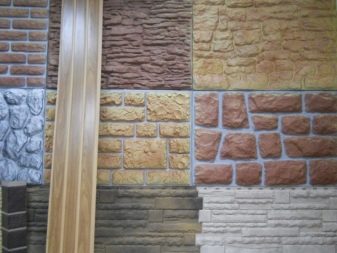
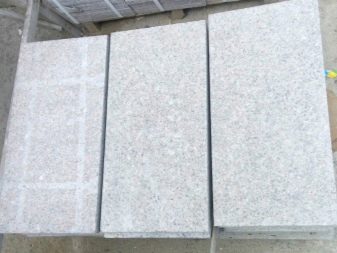
There are a number of varieties of natural stones:
- granite is a frost-resistant stone that has a large number of varieties and colors;
- the most popular stone for decoration of buildings is marble, which has a large number of colors and patterns;
- the best analogue of granite is basalt;

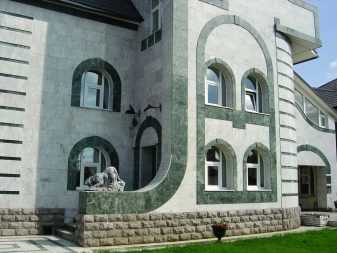
- quartzite is a hard stone interspersed with glossy quartz grains;
- dense types of limestone are in great demand in facade cladding;
- Quartz slate is an attractive natural stone that has many shades, and both light and dark tones can be found;
- travertine - most often has beige and brown colors and a porous structure, limestone tuff.

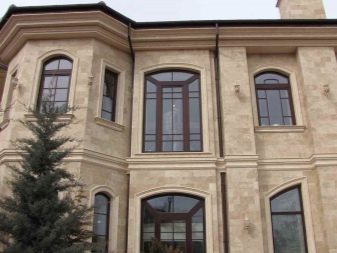
Granite
Granite has been used as a facing material for a facade for a long time. It is classified as a rock containing a large amount of quartz and consisting of a granular-crystalline structure. There is coarse-grained, medium-grained and fine-grained granite.
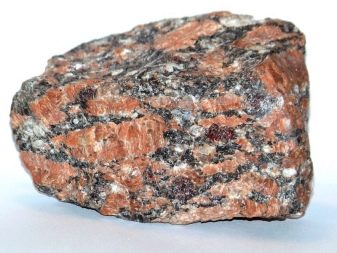
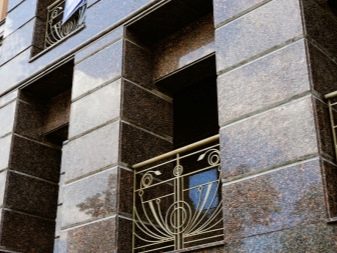
Positive properties:
- great strength and long service life;
- it can be polished, the polished surface remains for a rather long time;
- it is quite simple to get various textures, since the stone is easy to hew out;
- practically does not absorb water;
- retains all indicators, while having a long service life.
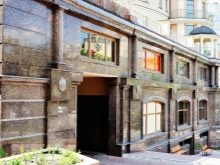
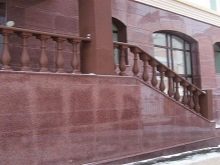
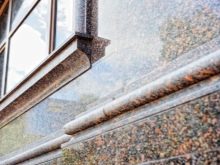
Granite comes in many different colors. You can find both black and bluish colors. This allows it to be used in a variety of architectural styles and colors.
This material can become a real decoration of the facade, attracting the attention of both guests and people who are just passing by.
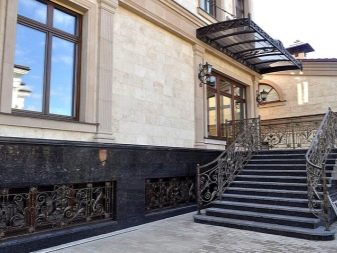

Marble
Marble is a rock formed due to high temperature and pressure. The basis is calcite. It has a high price and light color (white, light gray, yellowish). Silicate marble contains inclusions of minerals that can make its shades more varied. (black, red, green). You can often see various patterns on marble (spots, moiré patterns). If you use polish on the picture, it becomes clearer.Sanding can reduce brightness.
Marble allows you to make a unique and unusual design of the facade, makes it more stylish and attractive, adds a touch of status, grace and elegance.
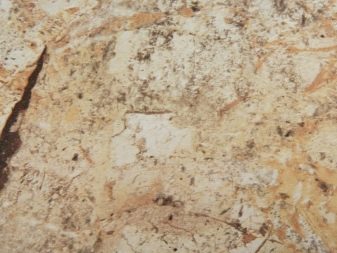
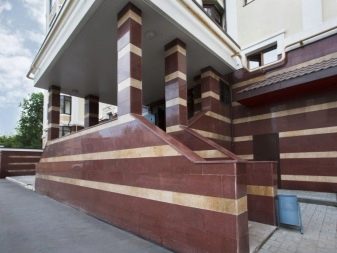
Positive traits:
- easy to process and polish;
- the best decoration for the facade, which has a natural pattern;
- heat resistant;
- pretty solid.
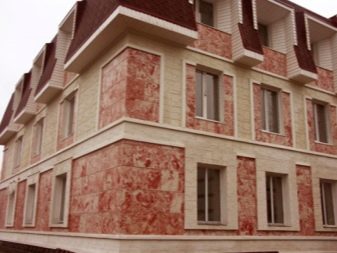
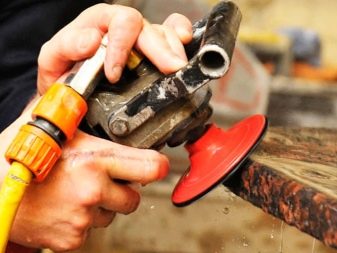
Travertine
Calcareous tuff is an excellent facing material and has many beneficial physical properties:
- wear-resistant;
- heat-resistant and has good thermal conductivity;
- fairly easy to process;
- may have anti-slip effect;
- has a long service life, depending on the hardness of the material.
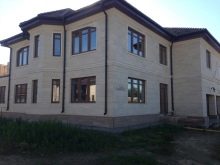
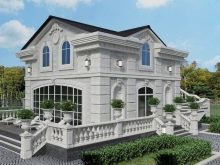
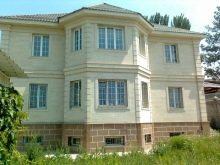
The material has a porous structure due to dissemination of leaves, shells and other organic matter. You can see the rich color range (from light beige to brown). But there are also red and yellow stones.
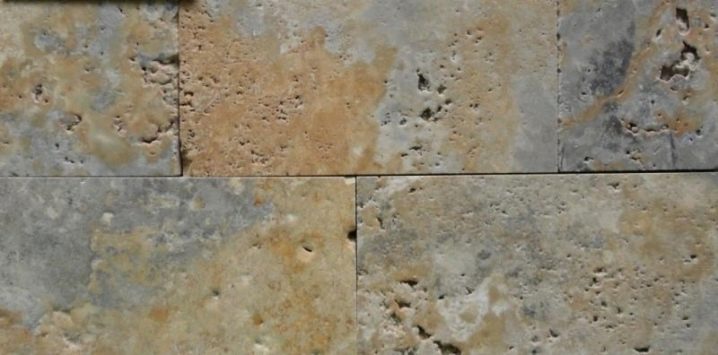
Slate
Material that forms due to pressure from sedimentary clay and heat. Sometimes shales contain quartz. A unique feature of the material is the ability to split into plates.

Beneficial features:
- has a solid structure;
- does not allow moisture to pass through;
- does not respond to low or high temperatures;
- ability to sound and heat insulation;
- easy to process and cut;
- resistant to weathering.
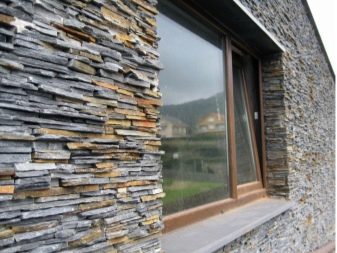
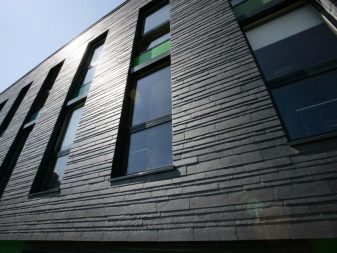
Limestone
The cheapest material for construction, which is used both in decoration and directly in construction. This sedimentary rock is organic, and its composition includes calcite, interspersed with quartz, sand and clay.
There is dense, porous, marbled and earthy limestone. Dense is a fine-grain calcareous spar and remnants of shells. It is he who is most often used as a material for facades. This material is frost-resistant and easy to process. It does not have a very diverse range of colors: white, yellow, shades of gray.

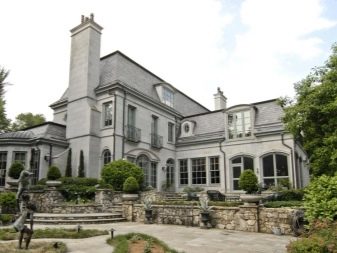
Advantages and disadvantages
This facing material has an attractive appearance. There are many varieties of natural stones. You can choose smooth tiles or stripes based on limestone.
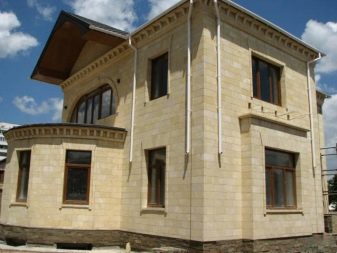
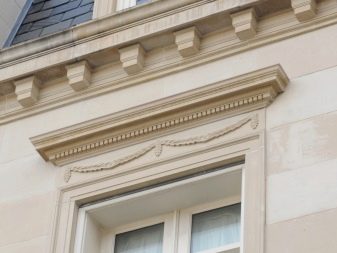
Pros:
- If you try to combine different shapes, sizes and textures of the material, you can achieve design effects that will impress both home owners and guests. You can give the façade the look of "wild stone" or brickwork walls.
- Natural stone is highly resistant to atmospheric precipitation, ultraviolet radiation and other natural factors that can destroy some materials. The facade, in the decoration of which natural stone was used, will serve for quite a long time and be durable and practical.
- The finishing material for outdoor use is completely environmentally friendly and has good bactericidal properties. And also he is able to protect against various climatic conditions. In the summer, you can enjoy the coolness in the house, and in the winter - comfort and warmth.
- There is a huge selection of original and unique natural shades. Natural material is prestigious and stylish, it is able to emphasize the status of the owner of the house.
- Quite easy installation that you can do yourself.
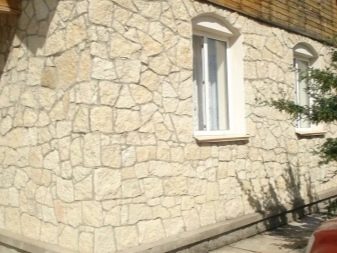
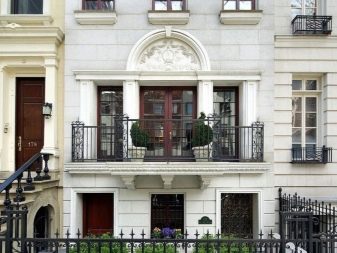
Minuses:
- Natural stone is a dense and heavy material, so the cladding can create additional stress on the facade walls and foundations. This can sometimes lead to deformation.
- Over time, any elements of the stone cladding can lag behind and fall off the wall. Similar situations occur due to the varying degrees of thermal expansion of the heavy stones and the mortar that anchors them to the walls.
In order to avoid this problem, it is necessary to follow the correct technology in the process of facing facades with such material.

Cladding methods
There are several ways of cladding, so everyone can choose something specific and suitable for themselves.
- Facade cladding for masonry from a die is the most popular, as it has an affordable price and looks quite aesthetically pleasing. In this case, the ends are not additionally processed, and the surface of the stone is not polished. For cladding the facade of the building, layers of natural stones (slate, sandstone) are used. In order to obtain an attractive appearance, layers of various shapes and sizes should be carefully selected so as not to allow large hollow spaces between them. This requires taste and average artistic skills.
- Castle is a classic version in which tiles of natural stones are used, which have convex, embossed surfaces. Thus, an imitation of masonry is created, which was used in the construction of medieval castles. That is why the method received a similar name, which translates as "fortress", "castle". The stones should be rectangular in shape and vary in height and width by 5-10 cm. To implement this option, you can take materials such as marble, slate, sandstone or limestone.
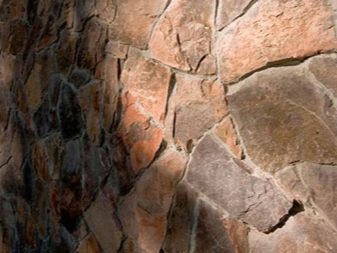

- "Plateau" - a method widely used for finishing plinths. So most often they frame the corners and other elements of the facade. Here, rectangular and square stone tiles are used, the ends of which are processed. The sides of the products should be proportional, but the dimensions of the dimensions differ (multiples of 5 cm). The surface need not be processed, so it will have a chipped relief. Limestone, marble, slate, sandstone and quartzite-sandstone are commonly used for cladding the "Plateau".
- Shakhriyar is a fairly popular method, as it has an affordable cost and ease of installation. For her, it is worth purchasing rectangular products of the same height, having processed edges and rustication. You can choose a rough, sanded or polished surface. This cladding method looks most advantageous when using a material with an untreated surface.

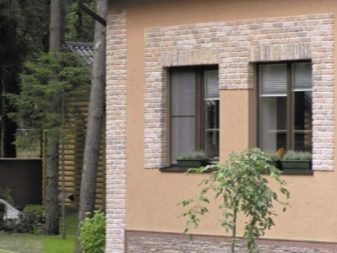
- "Assol" - voluminous and unique cladding, performed using long and thin rectangular products made from die stones. It is quite embossed, it is made of shale and sandstone slabs.
- "Rondo" is a nautical motive. The facing materials here are “rounded” (polished, river / sea) stones of various shapes and sizes. Limestone, sandstone, quartzite and shale are commonly used as materials.
It looks most attractive when facing window and door frames or corners, especially if the background is a surface painted in the appropriate shade.


Installation tips
In order to make a high-quality installation of the facade of the building, you first need to study the technological map, which will help you master the technology of facing the house with natural stone from the outside. There are several tips that can help in this matter.
- The stone must only be laid on a solid foundation. It is better to get rid of the old plaster. First, the base should be coated several times using a deep penetration strengthening primer.
- Then, using dowels, it is necessary to attach a reinforcing galvanized metal mesh to the base.
- At the bottom you need to attach the starting profile. Most often they use corners. But if it is not there, you can use an even block of wood. After the glue has set, you need to remove it.
- On the reinforced wall, use a trowel to throw construction adhesive for facing stone and lay the material itself. The glue must be applied both to the wall and to the stone.
- The glue sets pretty quickly, so it is worth first laying out the stone on the ground, and then transferring it to the wall.
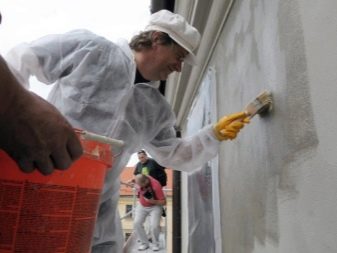

For information on how to decorate the facade of a private house with stone, see the next video.
Beautiful examples
- Impressive appearance of the façade, which has been clad with stone.
- Facing by the "Castle" method. This method is a great option for those who like the spirit of the Middle Ages.
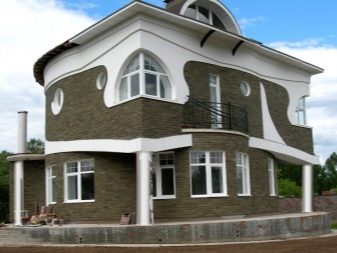
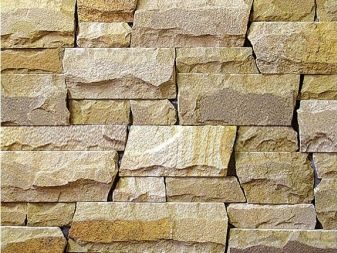
- Laying type "Plateau".
- Masonry "Shakhriyar".
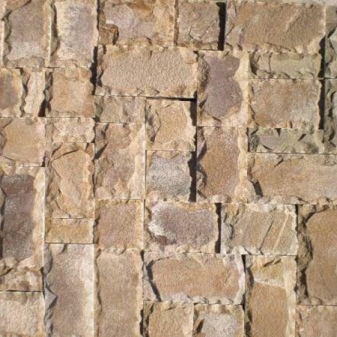
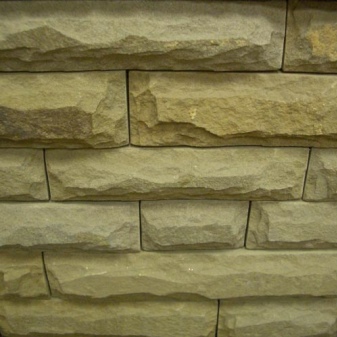













The comment was sent successfully.